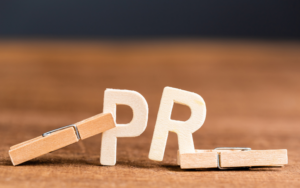Storytelling has been a part of human culture since the beginning of time. People love stories, from ancient myths to modern-day movies. This power of storytelling applies to public relations (PR). Effective storytelling can help PR professionals create compelling narratives that capture their audience’s attention and deliver key messages memorably. In today’s fast-paced digital landscape, crafting resonant stories is essential.
Knowing the target audience
To create a compelling story, PR professionals must know the target audience. They should understand what consumers care about and their pain points. By addressing these questions, PR professionals can create a story that speaks directly to the audience’s needs and interests. For instance, a company promoting a new product for young adults should use humor or pop culture references to grab their attention and build a connection with them.
Starting with a hook
In the attention economy, companies have mere seconds to grab the audience’s attention. To achieve this, they need to start with a hook that piques interest and draws readers in. This could be a surprising statistic, provocative question, or compelling anecdote. For instance, a company promoting an eco-friendly product could use a shocking statistic about plastic waste in the ocean to immediately grab readers’ attention.
Using a clear and concise structure
To captivate an audience, a compelling story must have a clear and concise structure. PR professionals must ensure that their story flows logically and is easy to follow. This requires a clear intro, a well-defined plot, and a satisfying conclusion.
Tailoring messages to media channels
An effective story should be tailored to the chosen media channel. Different platforms require different approaches. For instance, stories for Twitter should be snappy and concise, while stories on longer-form platforms such as blogs or magazine articles can have more detail and complexity. Additionally, visuals such as videos or infographics can make a story even more powerful and engaging .
Being authentic and relatable
Effective storytelling requires authenticity and relatability. PR professionals must be honest about a brand’s strengths and weaknesses. Real-life examples and experiences should be used to illustrate points. For instance, a new restaurant promotion could feature real customer reviews and photos to showcase the food and service quality. This approach makes the story more authentic and relatable to the audience.
Using multimedia elements
Images, videos, and infographics are powerful storytelling tools. They break up text, add visual interest, and engage readers. For instance, a fashion company could use high-quality images of models wearing new designs to showcase their products. Behind-the-scenes glimpses of the design process could be provided through videos. Infographics can show the sustainability of materials used.




